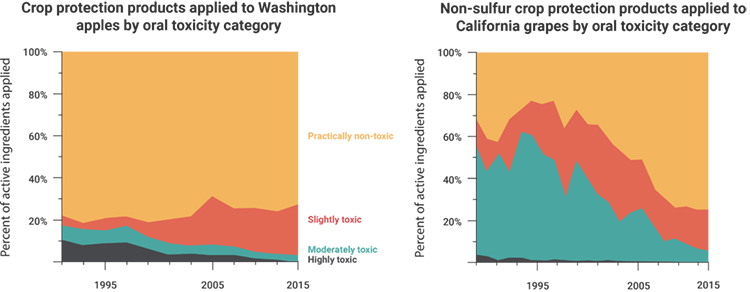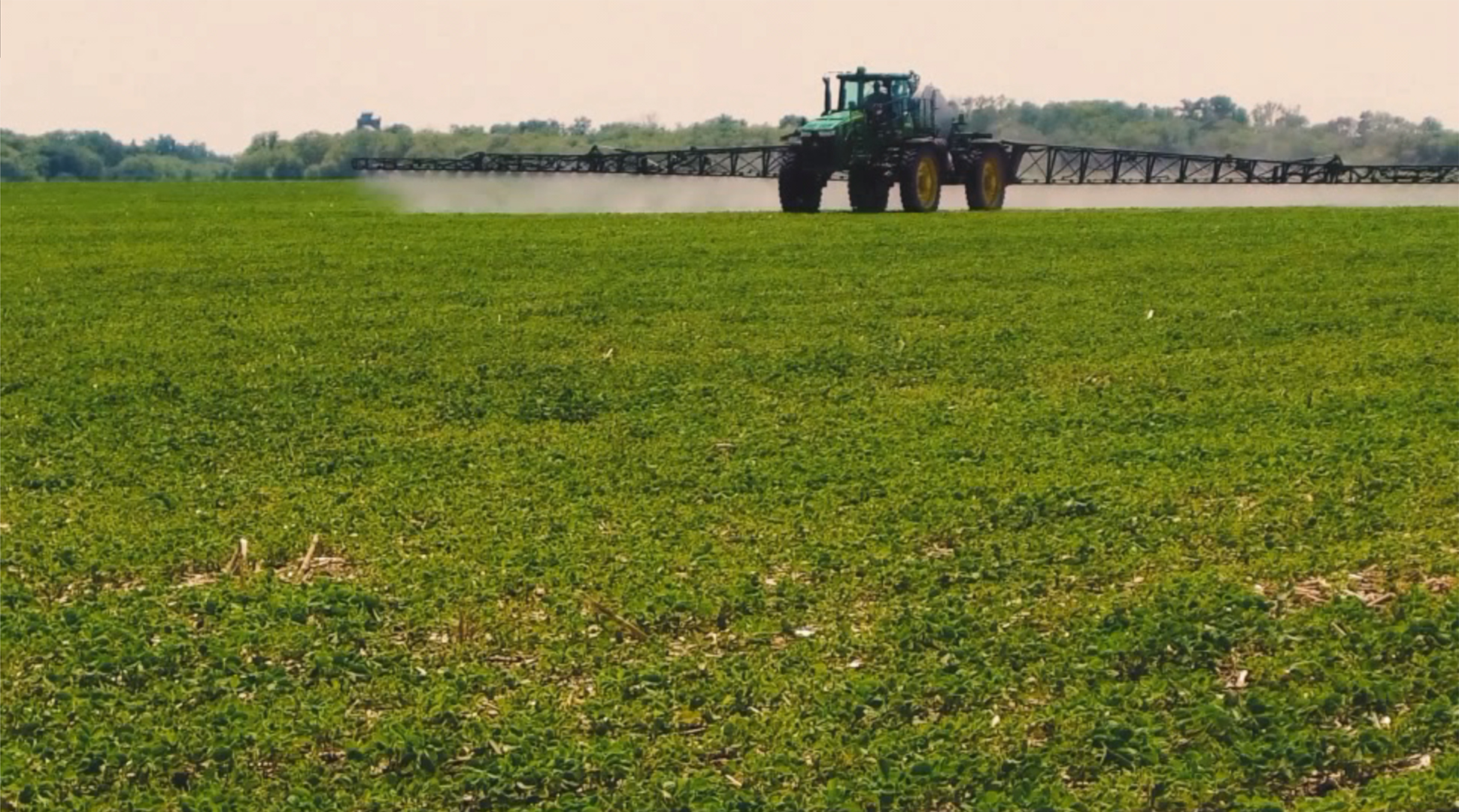Editor's note: This is the second in a series of six articles we will be sharing from the Genetic Literacy Project about pesticides and food.
By Kayleen Schreiber and Marc Brazeau
In Part 1 of this series, we showed that pesticide use has decreased dramatically per unit of food and fiber produced, as well as decreasing on a per capita basis (per person fed), even as it has only slightly decreased in use per acre. This is because the amount of food that each acre produces (its yield) has steadily increased since 1985.
Although pesticide toxicity continues to be a concern for many consumers, commonly-used pesticides have decreased in toxicity and improved in biodegradability over the years. However, debates concerning the safety of pesticides typically focus on whether or not to use pesticides at all, presenting organic and conventional as the two opposing sides, even though both approaches to farming use pesticides. They typically do not include nuanced comparisons of how pesticides have changed over time and how organic and conventional pesticides compare on common measures of toxicity and biodegradability. This post compares many of the most commonly-used pesticides to show where improvements have been made and where future improvements are still needed.
How have pesticides improved over the last 40 years?

Overall, fewer and fewer highly toxic pesticides are being used on crops. The EPA categorizes pesticides as highly toxic (as toxic as the nicotine used in e-cigarettes), moderately toxic (as toxic as the caffeine in coffee), slightly toxic (as toxic as the vanillin in vanilla beans), or practically non-toxic. Since 1991, the percentage of pesticides used on Washington apples that qualify as highly toxic has dropped from 10% to 0.2% in 2013 (data from the USDA). Since 1990, the percentage of non-sulfur pesticides used on California premium wine grapes that qualify as moderately toxic has dropped from 50% to less than 10%.
Read more at the Genetic Literacy Project.
This article excerpt is part 2 of a 6 part series – Pesticides and Food: It’s Not a Black or White Issue – that ran originally on the Genetic Literary Project and is reposted here with permission of the GLP and the authors.
